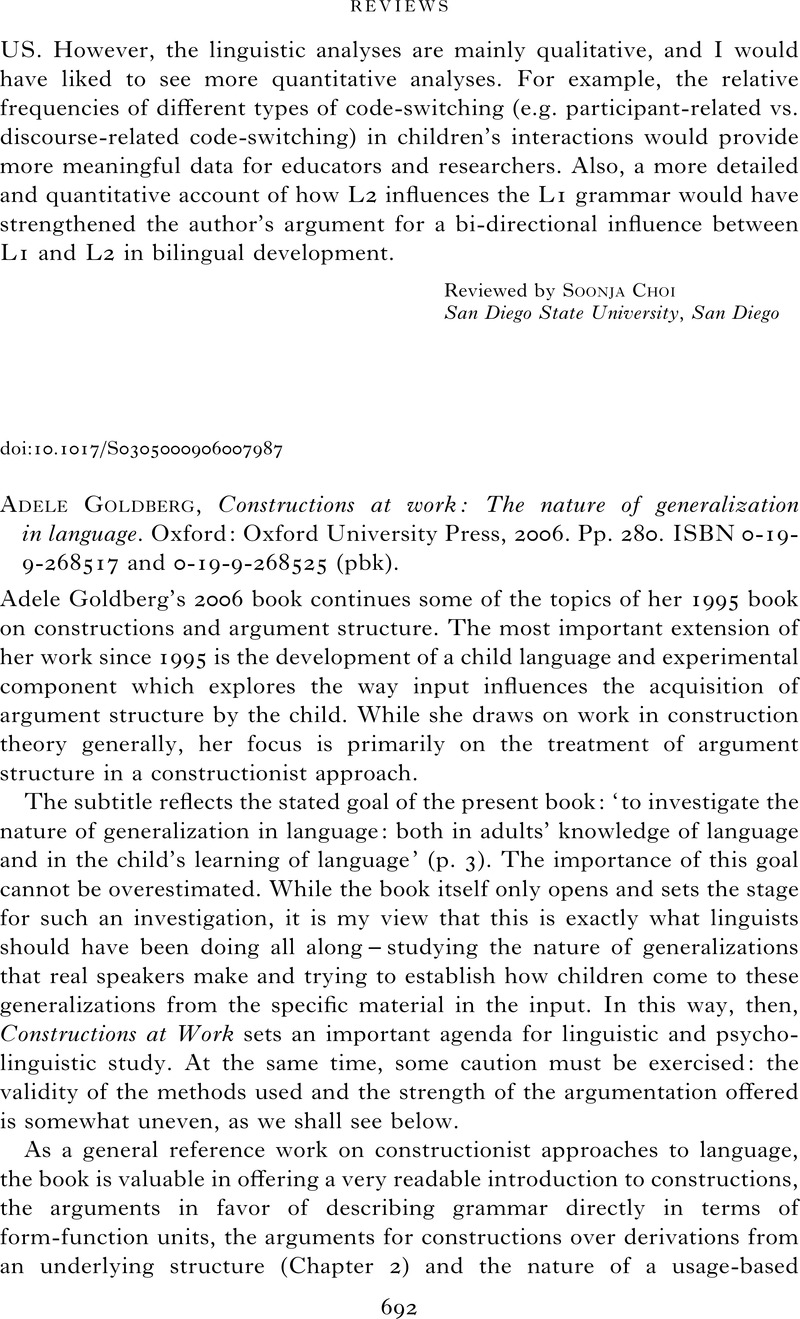Crossref Citations
This article has been cited by the following publications. This list is generated based on data provided by Crossref.
Crain, Stephen
Thornton, Rosalind
and
Khlentzos, Drew
2009.
The case of the missing generalizations.
Cognitive Linguistics,
Vol. 20,
Issue. 1,
Goldberg, Adele E.
2009.
Constructions work.
Cognitive Linguistics,
Vol. 20,
Issue. 1,
p.
201.
Crain, Stephen
and
Thornton, Rosalind
2012.
Syntax acquisition.
WIREs Cognitive Science,
Vol. 3,
Issue. 2,
p.
185.
2014.
Exploring Functional-Cognitive Space.
Vol. 157,
Issue. ,
Gonzálvez-García, Francisco
and
Butler, Christopher S.
2018.
Situating Valency Theory in functional-cognitive space.
Review of Cognitive Linguistics,
Vol. 16,
Issue. 2,
p.
348.





